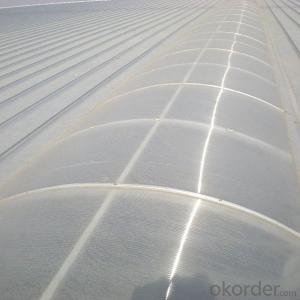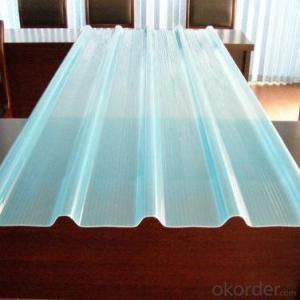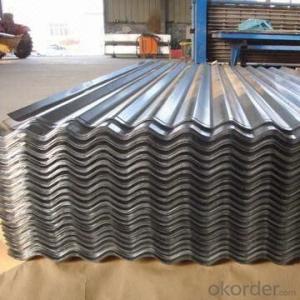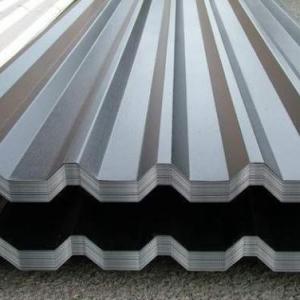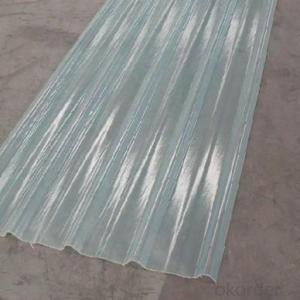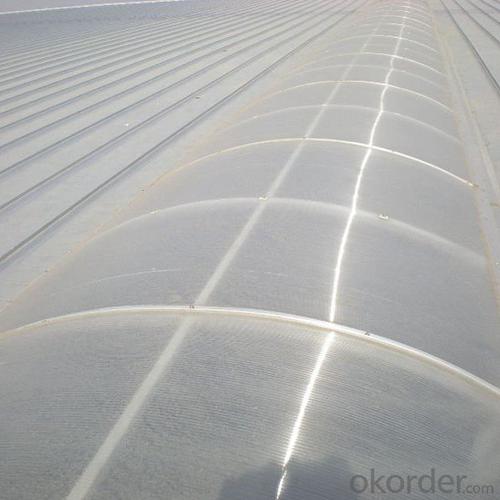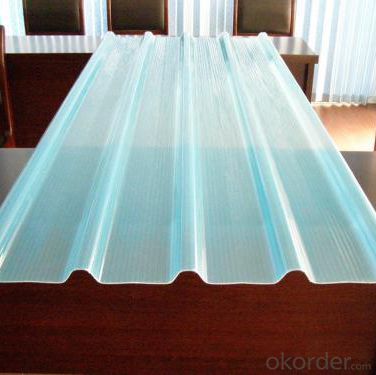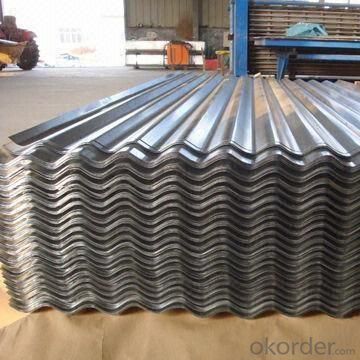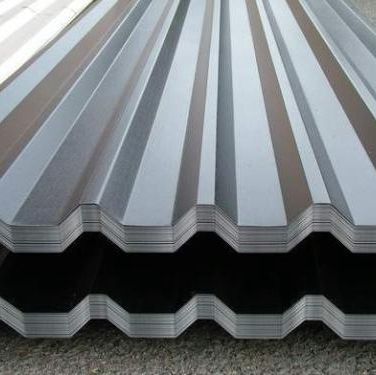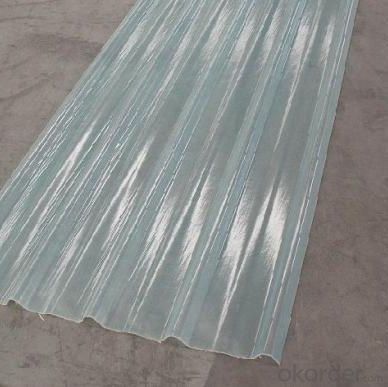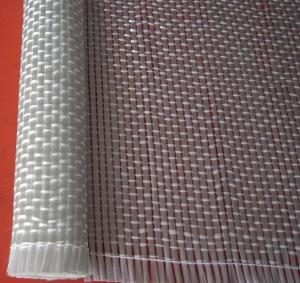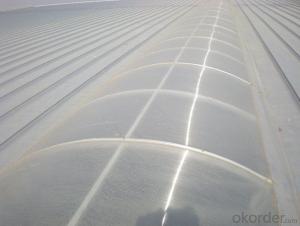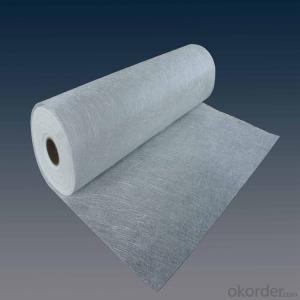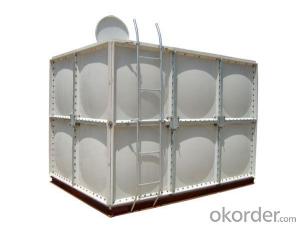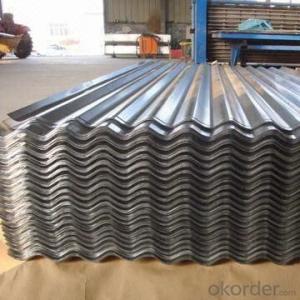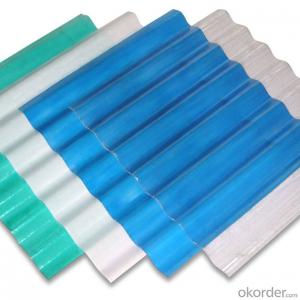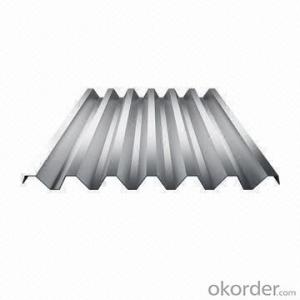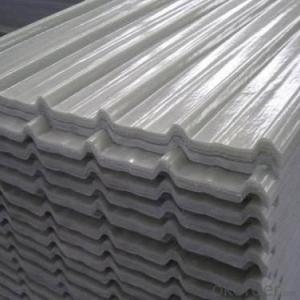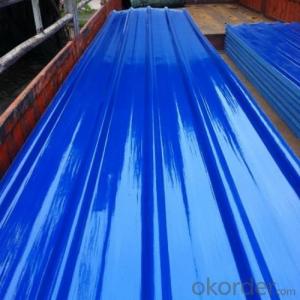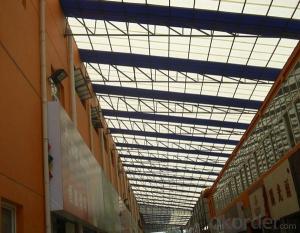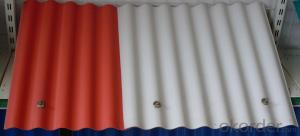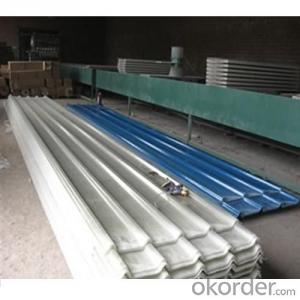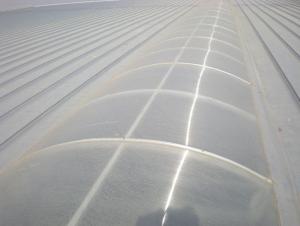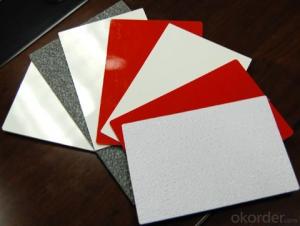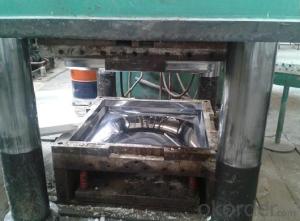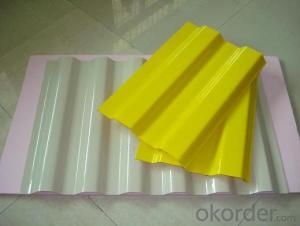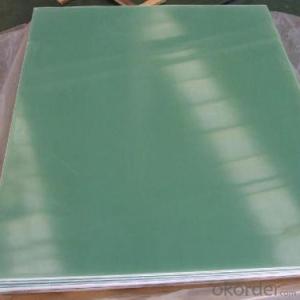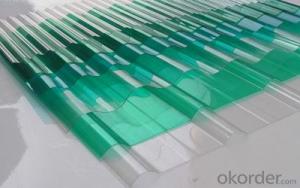FRP Roofing Panel - High Quality Fiberglass Roof Panel
- Loading Port:
- Tianjin
- Payment Terms:
- TT OR LC
- Min Order Qty:
- 20 m
- Supply Capability:
- 60000 m/month
OKorder Service Pledge
OKorder Financial Service
You Might Also Like
Specification
PRODUCT DESCRIPTION
FRP GRP Fiberglass Glassfiber Corrugated Roofing is a patent of our company, not like other FRP products, it is produced without yarn, instead, we use mat only. Therefore, the corrugated sheet is more strong in both horizontal and vertical direction.
Fiberglass corrugated sheet is usually used in construction site as protecting facility. It is dagarous for workers in building site since you never know if there is something hard drop down from the high area. So corrugated sheet is installed for preventing the stuff dropping down to hurt people.
Besides, it could also applied as the roof of the constructions.
FEATURES
1) The fiberglass content of new generation greenhouse panel has been improved by 18.3%.
2) Weather resistant and Self-clean ability.
3) Excellent yellowness resistance.
4) Strong impact resistant and low bending rate.
5)Withstand extreme temperature from -38 degree to +110 degree for a long time
6) Aging resistant: specified F4 film added on surface and gel coat makes it endurable for long.
7) More strengthened, safer, cleaner and more economical greenhouse panel.
8) Mainly serve the big factory, warehouse, super markets and other steel-structured project.
SPECIFICATIONS
| Name: | Fibreglass Reinforced Polyester(FRP ) Sheet |
| Material: | Protective film, Unsaturated resin polyester, Fiberglass |
| Weight: | 1800g/2400g/2750g/3050g Square meter |
| Thickness: | 0.8~3.0mm |
| Length: | Customized |
| Temp: | used in -40°c to 140 °c |
| OEM: | Welcomed |
| Color: | Clear/Blue |
PICTURES
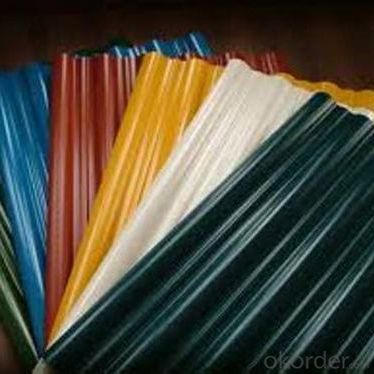
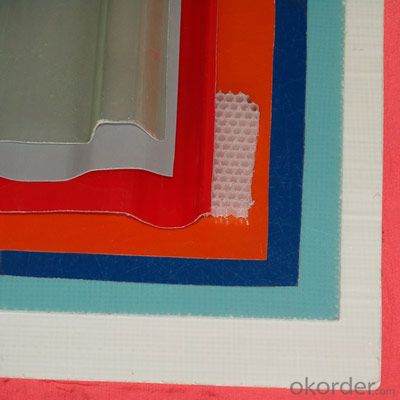

- Q: Can FRP roofing panels be used for carports or parking structures?
- Carports and parking structures can indeed utilize FRP (Fiberglass Reinforced Plastic) roofing panels. These panels possess qualities that make them an ideal selection for outdoor structures, as they are lightweight, resilient, and resistant to corrosion. They are capable of enduring harsh weather conditions, including extreme temperatures, UV radiation, and heavy rainfall. Moreover, installing and maintaining FRP panels is a simple task, ultimately reducing the overall expenses and labor involved in constructing carports or parking structures. Their adaptability allows for customization in terms of color, profile, and thickness, further enhancing their applicability for such purposes. In conclusion, FRP roofing panels offer a dependable and cost-efficient choice for carports and parking structures.
- Q: Are FRP roofing panels resistant to impact from falling objects?
- FRP (Fiberglass Reinforced Plastic) roofing panels are generally known for their high impact resistance. They are designed to withstand various environmental conditions and are often used in industrial, commercial, and agricultural settings. However, the specific impact resistance of FRP roofing panels can vary depending on the thickness, quality, and manufacturer specifications. In general, FRP roofing panels are engineered to be highly durable and able to resist impacts from falling objects. They are constructed with multiple layers of reinforced fiberglass and a resin matrix, which provides strength and rigidity. This composition helps distribute the impact force across the panel's surface, minimizing the risk of damage or breakage. It is important to note that while FRP roofing panels are designed to withstand normal impacts, they may not be completely immune to all types of falling objects. Extremely heavy or sharp objects, such as large tools or metal objects, may still cause damage to the panels upon impact. To ensure optimal performance and longevity, it is recommended to consult the manufacturer's guidelines and specifications for the specific FRP roofing panels being used. Additionally, proper installation, regular maintenance, and periodic inspections can help identify and address any potential issues that may arise from impacts or other factors, ensuring the continued durability and impact resistance of the FRP roofing panels.
- Q: Can FRP roofing panels be used for covered walkways in schools or universities?
- Yes, FRP roofing panels can be used for covered walkways in schools or universities. FRP (Fiberglass Reinforced Plastic) roofing panels are lightweight, durable, and offer excellent resistance to weathering, UV rays, and corrosion. They provide a cost-effective solution for creating covered walkways that can protect students and faculty from rain, snow, and harsh sunlight. Additionally, FRP panels are easy to install, require minimal maintenance, and can be customized to fit the specific design requirements of the school or university.
- Q: Can FRP roofing panels be installed on restaurant patios or outdoor dining areas?
- Restaurant patios or outdoor dining areas can have FRP (Fiberglass Reinforced Plastic) roofing panels installed. FRP panels are widely used in different settings, such as industrial, commercial, and residential applications. These panels are known for their ability to withstand harsh outdoor conditions, durability, and weather resistance. By installing FRP roofing panels on restaurant patios or outdoor dining areas, several advantages can be gained. Firstly, they provide excellent protection against rain, snow, and UV rays, ensuring that customers can enjoy outdoor dining comfortably, regardless of the weather. Additionally, FRP panels are lightweight and easy to install, making them a practical choice for quick and efficient installation. Moreover, restaurant owners can choose from a variety of colors and designs for the FRP panels, allowing them to select a style that complements their establishment's aesthetic. This versatility in design options allows for a seamless integration of the roofing panels with the overall ambiance of the outdoor dining area. Furthermore, FRP panels require minimal maintenance and cleaning. They are resistant to corrosion, rot, and mold, which is particularly advantageous in outdoor environments where moisture and humidity can be prevalent. In conclusion, installing FRP roofing panels on restaurant patios or outdoor dining areas is indeed possible. The durability, weather resistance, ease of installation, and aesthetic options make them a suitable choice for enhancing the outdoor dining experience for both customers and restaurant owners.
- Q: Can FRP roofing panels be used for animal shelters?
- Yes, FRP roofing panels can be used for animal shelters. FRP (Fiberglass Reinforced Plastic) panels are durable, lightweight, and resistant to corrosion, making them suitable for use in animal shelters. They provide excellent insulation, are easy to clean, and offer protection from harsh weather conditions. Additionally, FRP panels are cost-effective and can be customized to meet specific shelter requirements.
- Q: Are FRP roofing panels suitable for historical buildings?
- FRP roofing panels may not be the most suitable choice for historical buildings. While they offer durability and cost-effectiveness, they may not match the aesthetic appeal and authenticity required for preserving the historical value of such buildings. Traditional roofing materials that are architecturally compatible and can maintain the historical integrity of the structure should be considered instead.
- Q: Are FRP roofing panels suitable for green roof applications?
- FRP (Fiberglass Reinforced Plastic) roofing panels can be suitable for green roof applications depending on the specific requirements and conditions of the project. Green roofs are designed to provide environmental benefits such as energy efficiency, stormwater management, and improved air quality. These roofs typically involve the installation of vegetation, soil, and drainage systems on top of a roof structure. When considering FRP roofing panels for green roof applications, several factors need to be considered. Firstly, the structural integrity of the FRP panels must be evaluated to ensure they can support the weight of the green roof components, including the soil, vegetation, and water. Secondly, the water resistance and durability of the FRP panels are crucial. Green roofs require proper waterproofing to prevent water leakage and damage to the underlying structure. FRP panels with adequate water-resistant properties can help maintain the integrity of the roof system and protect the building beneath. Additionally, the compatibility of FRP panels with the vegetation and soil used in green roofs is essential. It's important to ensure that the materials in the FRP panels do not negatively impact the growth or health of the plants and provide a suitable substrate for their root systems. Furthermore, the thermal performance of FRP panels should be considered. Green roofs can help reduce heat transfer and improve energy efficiency. FRP panels with good insulation properties can enhance this effect, contributing to the overall energy performance of the building. In conclusion, FRP roofing panels can be suitable for green roof applications if they meet the structural requirements, provide adequate water resistance, are compatible with vegetation and soil, and offer good thermal performance. It is crucial to consult with experts in green roof design and construction to ensure that the chosen FRP panels are appropriate for the specific project.
- Q: Are FRP roofing panels prone to cracking from seismic activity?
- FRP roofing panels possess renowned durability and strength, enabling them to withstand various environmental factors. Nevertheless, seismic activity may induce cracking in these panels. The severity of such cracking hinges largely on the intensity and duration of the seismic event. Despite having some flexibility, FRP roofing panels remain susceptible to cracking if subjected to substantial vibrations and movements caused by earthquakes. Cracking may emerge due to stress concentration in specific points or weak areas of the panel. The probability of cracking can also be influenced by the quality of the FRP material, installation procedures, and the design of the roofing system. Nonetheless, it is important to acknowledge that FRP roofing panels are specifically designed and manufactured to exhibit greater resistance to cracking in comparison to alternative roofing materials. The utilization of fiber reinforcement significantly bolsters their structural integrity, rendering them less liable to damage from seismic activity when contrasted with traditional materials like concrete or clay tiles. To mitigate the risk of cracking, it is imperative to ensure proper installation and secure fastening of the FRP roofing panels to the supporting structure. Additionally, regular inspections and maintenance must be conducted to detect any signs of damage or weakening, enabling prompt repairs or reinforcements. In conclusion, while FRP roofing panels may possess some vulnerability to cracking during seismic events, their durability and strength render them a dependable choice for earthquake-prone regions. By employing appropriate installation techniques and regular maintenance, the risk of cracking can be minimized, ensuring the longevity and performance of the FRP roofing system.
- Q: Can FRP roofing panels be used for architectural designs?
- Yes, FRP (Fiber Reinforced Plastic) roofing panels can be used for architectural designs. FRP panels are versatile and can be molded into various shapes and sizes, making them suitable for creating unique and aesthetically pleasing architectural designs. These panels can be used for roofing applications in both residential and commercial buildings, providing durability, strength, and resistance to weathering. Additionally, FRP panels come in a variety of colors and finishes, allowing architects to incorporate them seamlessly into their designs. Moreover, FRP roofing panels are lightweight, making them easy to install and reducing the structural load on the building. Overall, FRP roofing panels are a viable option for architectural designs, offering both functional and aesthetic benefits.
- Q: Are FRP roofing panels resistant to warping or sagging due to heat?
- FRP roofing panels possess a well-known ability to withstand heat without warping or sagging. Their composition, which includes fiberglass reinforcement, grants them exceptional strength and stability, even in high-temperature environments. This reinforcement effectively prevents warping or sagging, guaranteeing the panels' long-lasting durability and performance. Furthermore, in addition to the fiberglass reinforcement, FRP panels are engineered with low thermal expansion properties. This means that they experience minimal expansion or contraction when exposed to temperature changes, thus reducing the risk of warping or sagging. These panels are carefully designed to endure heat and maintain their shape and structural integrity, establishing them as a dependable choice for roofing applications. It is important to note that although FRP panels are resistant to warping or sagging caused by heat, proper installation and maintenance are vital to ensure their longevity. Adhering to manufacturer guidelines and regularly inspecting and maintaining the roof will greatly enhance the performance and lifespan of the FRP roofing panels.
Send your message to us
FRP Roofing Panel - High Quality Fiberglass Roof Panel
- Loading Port:
- Tianjin
- Payment Terms:
- TT OR LC
- Min Order Qty:
- 20 m
- Supply Capability:
- 60000 m/month
OKorder Service Pledge
OKorder Financial Service
Similar products
Hot products
Hot Searches
Related keywords
